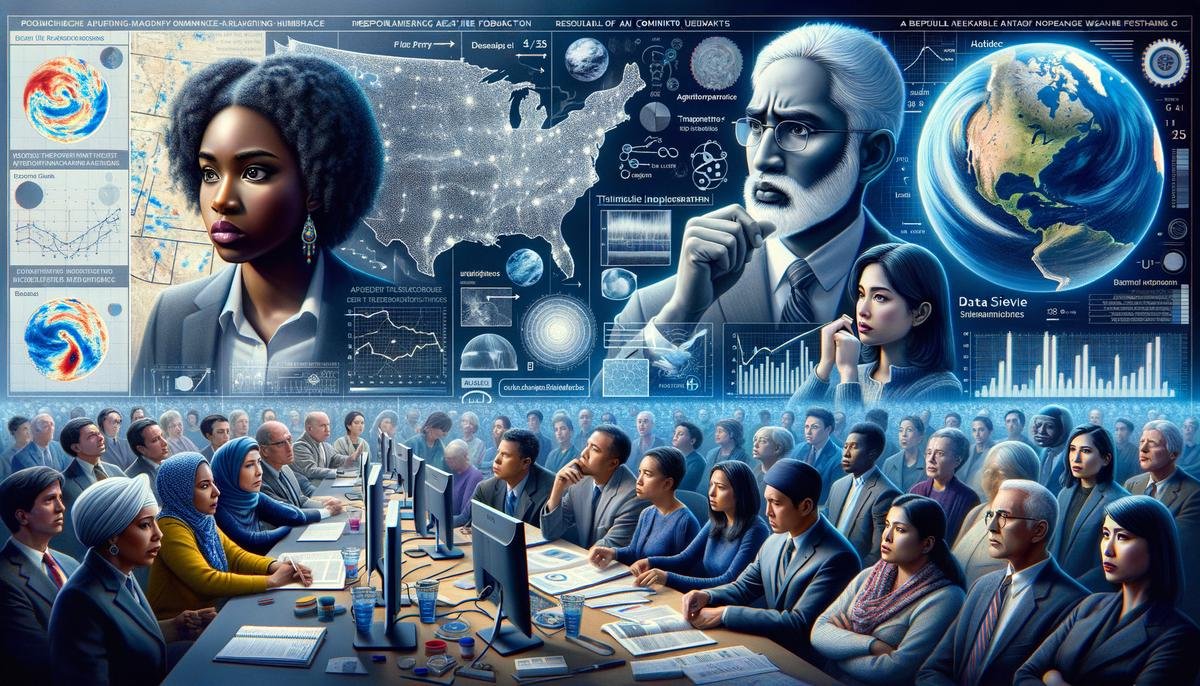Overview of Mistral AI
Mistral AI, founded in April 2023 by former Meta and Google researchers, offers a conversational AI assistant that engages in natural, multi-turn conversations on various topics. Mistral’s large language models and reinforcement learning enable it to understand natural language deeply, providing fluid and human-like interactions.
Users can customize Mistral AI’s personality, tone, voice, and avatar appearance. Integration with smart home devices allows control through natural language, aligning well with IoT technologies.
The recent Mixtral 8x7B model, with 8 billion parameters, enhances conversation quality, relevance, and context-awareness compared to the older 6.7B model. Internal tests show improved topic coherence and persona handling.
Installation requires an Nvidia GPU with at least 12GB of VRAM and Python 3.8+. Users can download the pre-built Docker image from the Anthropic website and start the container for an interactive Python prompt with Mistral.
People use Mistral AI for:
- Managing schedules
- Setting reminders
- Controlling smart home environments
- Entertainment
Businesses employ it for:
- Customer service
- Data analysis
- Workflow automation
However, high implementation and maintenance costs, along with the need for thorough training data, limit its adoption.
AI in Weather Forecasting
AI has revolutionized weather forecasting by leveraging machine learning to analyze vast datasets beyond human capability. Machine learning algorithms recognize patterns within historical weather records, satellite imagery, and real-time atmospheric conditions to make accurate predictions about heavy rainfall, tropical cyclones, and other severe weather events.
AI-driven weather prediction helps anticipate extreme weather events, allowing communities to prepare for hurricanes, floods, and heatwaves. Early and reliable warnings minimize the impact of natural disasters, saving lives and reducing economic losses.
Agricultural planning benefits from AI in weather forecasting. Farmers can make informed decisions about planting, irrigating, and harvesting crops based on timely and precise weather predictions. This optimizes resource use, enhances yield, and reduces waste.
AI’s role extends to urban planning and resource management. City planners can design more resilient infrastructures by considering flood zones, heat islands, and other environmental factors. Efficient resource allocation during extreme weather events becomes more feasible with accurate AI predictions.
AI also proves invaluable in understanding climate change by analyzing long-term weather trends. This understanding is crucial for developing strategies to mitigate the impacts of climate change.
Despite the benefits, AI in weather forecasting faces challenges such as high computational power requirements and energy intensity. However, the potential gains in terms of human safety and resource efficiency may outweigh these costs if managed properly.
As algorithms become more sophisticated and datasets grow, the accuracy and utility of AI-driven forecasts will improve. This will enhance our ability to deal with the unpredictability of weather, making lives safer and more manageable.

Mistral AI’s Application in Meteorology
Mistral AI’s advanced capabilities significantly enhance meteorological operations. When integrated with traditional weather forecasting systems, Mistral AI can process and analyze extensive datasets, providing more accurate and timely predictions.
Mistral AI’s machine learning models, such as the Mixtral 8x7B, excel in predictive analytics. These models are trained on extensive datasets, allowing them to learn intricate weather patterns and improve their predictive capabilities over time. They can simulate various scenarios and predict outcomes with a much higher degree of confidence compared to conventional models.1
AI-driven forecasts are not only more accurate but also produced faster. By integrating Mistral AI into forecasting systems, meteorologists can significantly reduce the time required to analyze data and disseminate warnings. This ensures that communities have more time to prepare and respond to imminent threats.
Mistral AI enhances the overall efficiency of meteorological operations. Its ability to handle data from a multitude of sources enables a holistic approach to weather forecasting. The AI seamlessly integrates this information, providing a comprehensive view of the atmospheric conditions.
In addition to its predictive prowess, Mistral AI plays a crucial role in post-event analysis. After a severe weather event, AI can help meteorologists understand what happened, why it occurred, and how future predictions can be improved.

Challenges and Ethical Considerations
While the potential of AI in weather forecasting is profound, it is crucial to address the challenges and ethical considerations that accompany its integration into meteorological science.
Data privacy is a significant issue. AI systems rely on extensive data collection, which often includes personal and location-specific information. Ensuring that this data is processed and stored securely is paramount to protecting individual privacy.
Another pressing concern is the high energy consumption associated with AI technologies. Training machine learning models, especially those as advanced as Mistral AI’s Mixtral 8x7B, demands substantial computational resources. Developing more energy-efficient algorithms and leveraging renewable energy sources for AI operations can help balance the environmental scales.
Transparency and accountability in AI systems are equally essential. Predictive models must be explainable, meaning that meteorologists and other stakeholders can understand how decisions and forecasts are derived. This transparency is crucial for trust, especially in high-stakes scenarios like weather emergencies.
The deployment of AI in meteorological applications must be overseen with a strong ethical framework. AI systems can perpetuate existing biases in historical data they are trained on. Ensuring diverse and comprehensive training datasets can mitigate such biases, promoting fairness in AI-driven forecasts.
The need for ongoing human oversight cannot be overstated. While AI can process vast amounts of data and identify patterns beyond human capacity, the interpretation and final decision-making should still involve human experts. Meteorologists bring invaluable expertise and contextual understanding that AI currently lacks.
Ethical considerations extend to the broader societal implications of AI in weather forecasting. As these technologies become more widespread, there is a risk of disproportionate access, where affluent communities benefit more readily from advanced forecasting tools, marginalizing less privileged regions. Efforts must be made to democratize access to these technologies, ensuring that all communities can benefit from improved weather forecasts and the subsequent safety measures.

Future Prospects of AI in Weather Forecasting
The future of AI in weather forecasting is promising, with advancements that can enhance the accuracy and timeliness of predictions. As machine learning algorithms improve and datasets grow, we can expect improvements in predictive capabilities.
One area of development is the integration of AI with quantum computing. Quantum computers can handle and analyze large weather datasets more efficiently, allowing for more detailed simulations and accurate forecasting. Researchers are exploring how quantum algorithms can be applied to meteorological models.1
Another area of growth is real-time predictive analytics. Future AI systems will leverage comprehensive datasets, including inputs from IoT devices, to provide hyper-localized weather predictions. This level of detail will be valuable for urban and rural areas, enabling precise planning and response to weather events.
AI-driven weather forecasting is likely to integrate with other aspects of daily life. Smart cities could use AI-generated data to optimize traffic flow based on predicted weather conditions. AI could also enable autonomous agricultural systems that adapt to weather changes, optimizing irrigation and planting cycles.
Efforts are ongoing to improve the interpretability and transparency of AI models in meteorology. Techniques like explainable AI (XAI) aim to create models whose decision-making processes can be understood and validated by human experts.2 This is important for building trust and informing critical decisions.
AI is expected to play a role in disaster management and climate science by predicting extreme weather events and coordinating responses. During a natural disaster, AI could:
- Dynamically allocate resources
- Organize evacuations
- Manage emergency services based on real-time data
Research is targeting the mitigation of biases in AI models by diversifying training datasets and incorporating a wider array of meteorological data. This ensures reliable forecasts across all regions and promotes the equitable distribution of predictive technologies.
Developing policies and frameworks to govern the ethical use of AI in meteorology will be essential. Regulations that balance innovation with privacy, energy consumption, and transparency will foster public trust and ensure responsible deployment.
The future of AI in weather forecasting is driven by technological advancements and integration into various aspects of life. Ongoing research and development aim to improve accuracy, utility, accessibility, and sustainability of weather predictions. By thoughtfully navigating these developments, AI can play a pivotal role in enhancing our understanding of and resilience to the changing climate.





